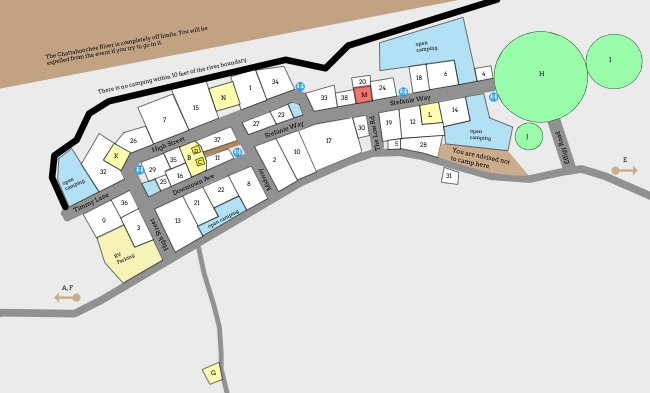Another entry in the annals of burn design
/Okay, so it was a two-week hiatus. Since my inbox was not flooded with emails expressing concern over my absence, I’m going to assume this was not a hardship on either of my readers.
As everyone knows by now, I have been since 2016 the Benevolent Placement Overlord™ for Euphoria and Alchemy, Georgia’s spring and fall burns, respectively. During these three years we have moved from property to property, looking for a permanent home where the permits involved in staging a large event do not require the approval of people who are squigged out by the idea of hippies in the woods, Mabel!
It’s called a burn for a reason: the Effigy was a hexagonal maze until we lit it on fire. photo by Joe Hunt
What this has meant is that for three years I have had to design the burn from the ground up every time we moved, not just place the camps in some kind of field-sized game of Tetris. Roads, squares, plazas, city center—all of that has to be created ex nihilis, and I’ve done it no fewer than eight times. That has to be some kind of record.
Therefore, when it became apparent last fall that we had found a permanent home, I rejoiced because finally I’d be able to make some SUCCESSIVE APPROXIMATIONS to my design rather than another ABORTIVE ATTEMPT.
Hahahahaha, said the Universe, and the leadership promptly decided to move the burn to the other end of the large field we used.
Last fall:
Alchemy, the fall burn, hosted 2,000 hippies in 99 camps. It used two fields and was, as you see, a series of great loops. It was successful-ish, and I had great plans to rethink my approach.
Oh well.
This spring:
Only 600 hippies in 38 camps—a much more intimate burn, to be sure. I was able to put into place some of my SUCCESSIVE APPROXIMATIONS: more T-intersections, smaller blocks, etc., and they seem to have worked. Everyone loved the layout: they didn’t feel as if they were trekking to the ends of the earth. (I just thanked them for the compliments; I didn’t point out that this burn was less than a third the size of Alchemy, so of course you didn’t have to walk as far.)
One good thing I learned this time was that I can control some of the dark spaces by keeping the long parallel streets about 80–90 feet apart: all the camps put their bedroom spaces in the back away from the road, making a more interesting passeggiata for the pedestrians.
I (and the camps who anchor them) am still unsure about the “small public square” concept. In the real world, a square opens up from a street and has something that the pedestrians can interact with: sculpture, fountain, cafe. I’d love to place our squares on the streets, but we have to provide for vehicular traffic (and emergency traffic at that), so putting something like my camp’s labyrinth in the direct path of traffic is extremely problematic.
Onward to Alchemy! (Oct 3–6, if you’re interested.)





